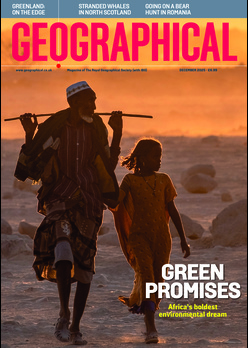
A new study reveals that volcanic eruptions in Iceland might become more frequent, and the instability could last decades
By
With over 11 per cent of the island covered in glaciers and around 130 volcanoes (32 of them active) dotting the landscape, Iceland well deserves its reputation as the island of fire and ice. Both glaciers and volcanoes can be extremely destructive. Glaciers crush the ground under them and, over time, reshape the landscape. Volcanoes play a similar role but often in a much shorter time. In recent years, the most infamous Icelandic volcanic eruption was when Eyjafjallajökull erupted in 2010 and sent a volcanic dust cloud into the atmosphere, shutting down air space across most of Europe for several days. Fortunately, most of the time, volcanoes are inactive, and in Iceland, a volcano erupts on average once every five years.
But imagine the impact it could have on day-to-day life if the incidence of volcanic eruptions were to significantly increase. Well, people on Iceland’s Reykjanes Peninsula, which is home to 70 per cent of the island’s population as well as the biggest city (the capital, Reykjavik, is situated just at the northeastern edge of this peninsula), as well as the international airport, might have to get used to living in an area of heightened volcanic activity. The volcanoes on the peninsula have been dormant for around 800 years, but since 2021, there have been eight separate eruptions. The latest of which took place in May and June of this year. These eruptions have already brought great disruption and structural damage and led to the government declaring a state of emergency. Urban centres have been evacuated, and buildings and roads have been destroyed.
A new report says this might be just the start of an extended period of heightened volcanic activity that will see recurring eruptions lasting ‘years to decades and possibly centuries’. By analysing seismic tomography imaging and the composition of lava samples, an international team of scientists has worked out the geological processes behind the new volcanic era.

‘Almost all of Iceland’s island is built from lava’, said Ilya Bindeman, a volcanologist and earth sciences professor at the University of Oregon, and one of the report authors. ‘The country sits on the Mid-Atlantic Ridge, the tectonic plate boundary that causes North America and Eurasia to push further apart. The drifting of these plates can spark volcanic eruptions when a hot rock from the earth’s mantle — the middle and largest layer of the planet — melts and rises to the surface.’
Although scientists know the origin of Reykjanes Peninsula’s current eruptions is plate movement, the kind of magma storage and plumbing systems that feed them remain unidentified. ‘The peninsula consists of eight volcanically active sites, so understanding whether there is one shared magma source or multiple independent ones and their depth can help predict the duration and impact of these eruptions,’ said Bindeman.
By using geochemical and seismic data to examine samples of lava rock from two different volcanoes in the peninsula, the team involved in the study concluded that the volcanoes had similar ‘fingerprints’, which would indicate a shared magma storage zone below the peninsula. Imaging of the earth’s interior based on local earthquakes also suggested the existence of a lava reservoir about 8.8km to 12 km (5.5 to 7.5 miles) below the earth’s surface.
The report concludes that this marks the beginning of potentially persistent volcanic episodes in Iceland. Of course, such news immediately raises the question of how long this volcanic episode might last and how violent it might turn out to be. Unfortunately for the residents of the Reykjanes Peninsula, the researchers can’t precisely predict yet how long the episodes and the gaps between each will last.
‘Nature is never regular,’ Bindeman said. ‘We don’t know how long and how frequently it will continue for the next ten or even hundred years. A pattern will emerge, but nature always has exceptions and irregularities.’
Related articles:




